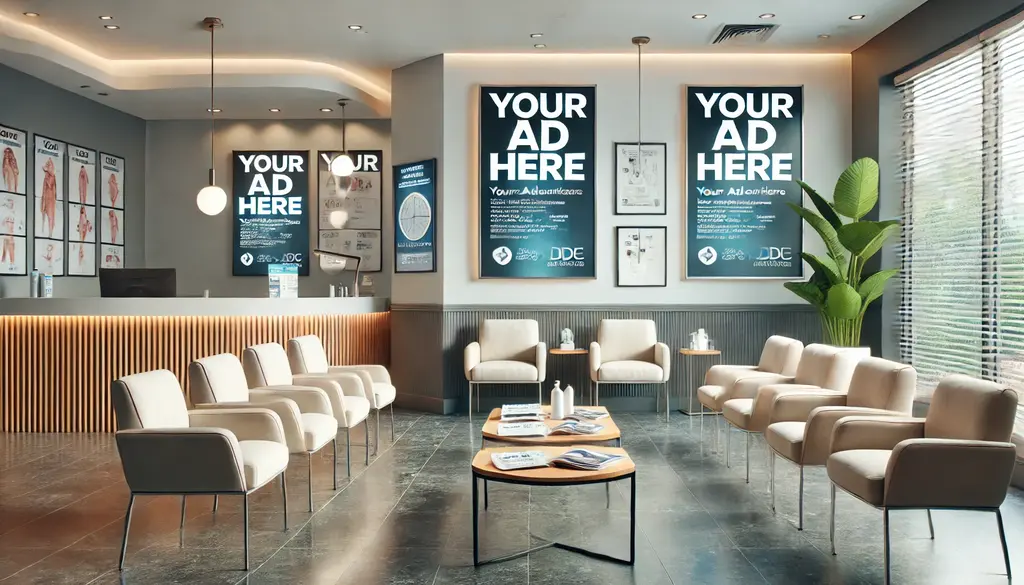In an age where video reigns supreme, the doctors commercials have become a staple in healthcare marketing. From local television spots to Instagram reels, the visual power of motion storytelling is undeniable. But here’s the problem: when everyone is shouting through a screen, the messages blur into the background.
What if there were a quieter, more tangible way to cut through the noise — a method that builds trust not through flashy visuals, but through physical presence and contextual relevance?
Enter in-hand advertising — branded media formats like pharmacy bags, placemats in waiting rooms, or coffee sleeves in nearby cafés. For healthcare providers, this old-school-meets-new-school tactic offers something digital can’t: personal, local, high-trust exposure in the moments that matter most.
Let’s explore why in-hand media may actually outperform the doctors commercials in local trust-building — and how medical practices can rethink their media mix to engage patients where it counts.
Why The Doctors Commercials Struggle to Build Lasting Trust
Whether on TV or online, doctors ads are often polished, informative, and packed with visuals of smiling patients and caring physicians. But while they serve an important awareness role, they often fall short in three key areas:
Over-Saturation
Audiences are bombarded with content. The average person sees over 5,000 ads per day, many of which are video-based. Your doctors advertisement might look great — but if it’s sandwiched between a car ad and a cat video, it’s easily forgotten.
Low Dwell Time
Most digital ads, even well-produced ones, get under 6 seconds of attention. There’s little opportunity for true connection or reflection.
Context Disconnect
When a viewer sees a doctors ad while scrolling through unrelated content, it lacks emotional timing. There’s no life moment tying the message to a real need.
That’s where tactile, contextual advertising steps in.
In-Hand Media: The Sensory Alternative to The Doctors Commercials
What sets in-hand media apart? It doesn’t just show up in someone’s feed — it shows up in their routine.
Imagine this:
A patient picking up a prescription sees your branded pharmacy bag with a QR code linking to an educational video or appointment scheduler.
A family at a pediatric clinic notices a placemat ad on the table with seasonal tips on child wellness and your local clinic’s contact info.
A young parent at a laundromat finds a coffee sleeve offering a free pediatric consultation nearby.
These aren’t just ads — they’re trusted touchpoints. In environments where people are already thinking about health, family, or time, your brand appears as a natural, helpful presence.
The Psychology Behind In-Hand Trust
Let’s break down why in-hand advertising feels more trustworthy than traditional doctors commercials:
🧠 Tactile Memory
Humans are wired to remember what they touch more vividly than what they scroll past. A pharmacy bag or placemat with your branding lingers in the subconscious longer than a 15-second pre-roll.
🧘 Low Cognitive Load
Unlike digital ads that demand attention amidst distractions, in-hand ads appear in calm, focused environments — like a waiting room or coffee shop.
🤝 Implicit Endorsement
When your ad is delivered by a trusted third-party location (a pharmacy, doctor’s office, clinic), it gains credibility. It’s as if the location is vouching for you.
📍 Hyper-Local Precision
In-hand ads are placed geographically, meaning your message reaches people who are physically able to visit your practice — a huge upgrade over broad, zip-code-based TV or digital ad buys.
Where In-Hand Ads Win vs. The Doctors Commercials
Element | Traditional Doctors Commercials | In-Hand Healthcare Ads |
Format | Video | Physical (bags, placemats, sleeves) |
Attention Span | 5–15 seconds | 2–5 minutes (dwell time) |
Trust | Medium (screen = skepticism) | High (tied to location) |
Cost | High production + media buy | Low cost per impression |
Context | Often random or generic | Placed in health-conscious settings |
Call-to-Action | Often skipped or ignored | Tied to QR, direct, timely |






